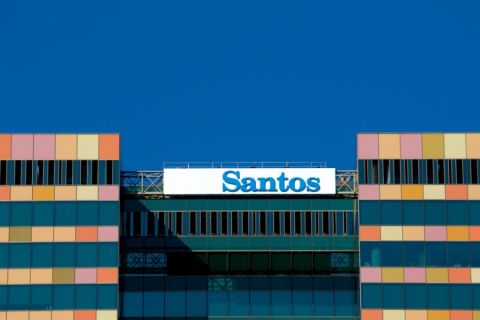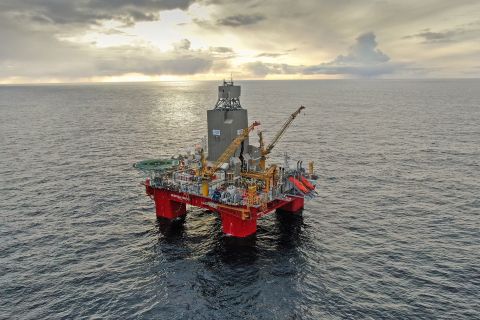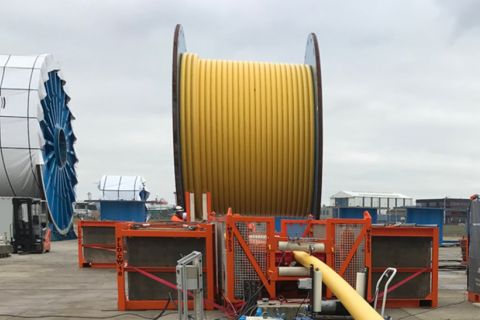
(Source: Hart Energy; Shutterstock.com)
[Editor's note: A version of this story appears in the August 2020 edition of Oil and Gas Investor. Subscribe to the magazine here.]
Dan Pickering, the featured speaker on a video conference with the ADAM Houston group in July, noted the preeminent downside of virtual industry presentations: “I don’t get a free lunch out of this.”
I think all the attendees were lamenting the absence of a fine meal at Brennan’s restaurant on a summer Friday gathering as many are still working from home amid continued COVID-related stay-at-home directives. I know I’m not contributing much to the global demand number yet as I mostly hunker down in the home office, aside from an occasional foray into the actual office, where we must RSVP to come to work and stay within a maximum attendance. Fifty miles roundtrip a day not back online.
Pickering, the founder and namesake of Pickering Energy Partners and the president and co-namesake of Tudor, Pickering, Holt & Co., proffered his insight on how this all might play out.
First, Pickering’s view is that we’re in a protracted downturn that began in November 2014 and the COVID-OPEC double black swan scenario earlier this year is a cut-to-the-chase event. Before March, the E&P sector was already dealing with bloated balance sheets, capital flight and attempting to reformat objectives from production growth to returns focused. The events of 2020 just accelerate that: do it now or die.
“We’re six years into a downturn. This is our generation’s 1986,” he said. “Stress, distress and bankruptcy are upon us. A lot of companies have three bullet holes in them and are in the process of bleeding out. That’s a brutal way to say it, but it’s happening.”
Despite the Energy Information Administration and International Energy Agency forecasts for global crude demand to return to 98 MMbbl/d to 99 MMbbl/d in 2021, Pickering is skeptical. “Frankly, that seems way too optimistic,” he said. His reasoning: transportation. COVID is still keeping employees at home, many will continue to work from home when the virus passes, and masses remain unemployed and won’t return to work soon or won’t take vacations.
“My guess is we’re going to find equilibrium somewhere around 95 million barrels a day, and it’s going to take us all of next year to get there,” he said.
Add in some 10 MMbbl/d of OPEC production now offline and the storage overhang, “I’m looking at 2022 as the time period where we get back closer toward equilibrium. My view is we don’t see prices in the fifties for the next 18 months. Plan for a couple of tough years. We’ve got a slog in front of us,” he said.
The silver lining is these conditions will make the industry leaner and stronger.
“As we move through the next five years, we’re going to have fewer companies,” he said, “but they’ll be stronger by definition. What created casualties was not enough hedging and balance sheets that were too stretched. So we will have less debt and more hedges as the industry moves forward. That will dampen volatility. It may take some of the upside oomph out of profit and loss statements, but it’s going to take some of the risk out as well.”
Even this phase of capital famine—by both public and private investors, and reserve-based lenders too—is painfully positive, he said.
“We spent too much in the past. We’re going to see more discipline from the business. This capital starvation means less money is going into the ground, which means less production is going to come out of the ground, and that will fix the macro.”
Maybe the most positive outcome of this drought will be asset opportunities, Pickering said. “I think this is the best opportunity to deploy capital that we’ve seen in the past 30 years.” But it requires patience. “Things do get cheaper,” he said.
Assets first must be squeezed through the restructuring process, which doesn’t take three months, rather nine to 16 months. Inherently, banks and bondholders don’t want to hold oil and gas equity, he noted. And when bondholders go from 100 cents on the dollar basis to a 20 cent basis following restructuring, “selling a 20 cent bond for 30 cents, that’s a win.
“So we think that there’ll be sellers at pretty cheap valuations after we get this asset transition over with,” he said.
And Pickering, with capital to spend on Permian proved developed producing assets, sees fewer buyers and smaller checkbooks. Not only will the number of E&Ps be slashed through bankruptcies or consolidation, but private-equity capital—and firms—will be slashed by half as well, he predicts.
“Ironically, I think the supply of deals is going to go up, and the demand for deals is going down. The process is going to take time, but it’s putting assets in the hands of natural owners,” he said.
“There are going to be great opportunities.”
Speaking of virtual conferences, Hart Energy’s DUG Midcontinent Virtual Conference will be held all online this year. All the same great content and speakers as usual. Register at hartenergyconferences.com/dug-midcontinent.
Recommended Reading
Santos’ Pikka Phase 1 in Alaska to Deliver First Oil by 2026
2024-04-18 - Australia's Santos expects first oil to flow from the 80,000 bbl/d Pikka Phase 1 project in Alaska by 2026, diversifying Santos' portfolio and reducing geographic concentration risk.
Iraq to Seek Bids for Oil, Gas Contracts April 27
2024-04-18 - Iraq will auction 30 new oil and gas projects in two licensing rounds distributed across the country.
Vår Energi Hits Oil with Ringhorne North
2024-04-17 - Vår Energi’s North Sea discovery de-risks drilling prospects in the area and could be tied back to Balder area infrastructure.
Tethys Oil Releases March Production Results
2024-04-17 - Tethys Oil said the official selling price of its Oman Export Blend oil was $78.75/bbl.
Exxon Mobil Guyana Awards Two Contracts for its Whiptail Project
2024-04-16 - Exxon Mobil Guyana awarded Strohm and TechnipFMC with contracts for its Whiptail Project located offshore in Guyana’s Stabroek Block.




